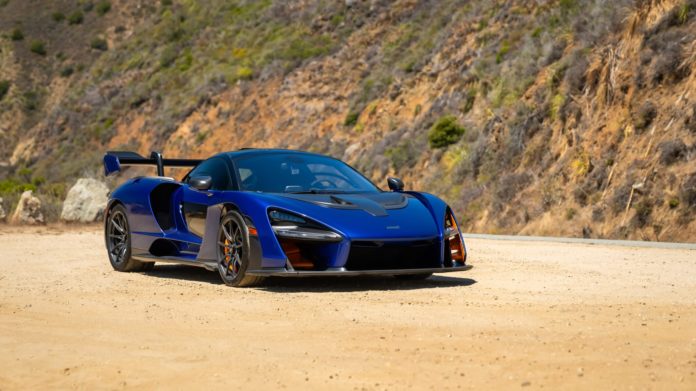The keys to this McLaren Senna, an early factory-owned pre-production unit, came with warnings attached. The sternest came from Bruno Senna, yup, that Senna, who called it the noisiest, rattliest example he’d ever driven. Alongside the carmaker’s generous PR team, he insisted that its build quality wasn’t representative of the 500 customer cars produced. It hasn’t had an easy life either. Having racked up just under 10,000 of the harshest miles a car can cover, including starring in various destructive magazine tests, this Senna needed a complete restoration of its suspension before its sixth birthday.
As the warnings poured in, this car’s allure only grew. Drive opportunities in hypercars are rare enough, but a chance to sample a properly thrashed, high-mile, pre-production unit? That just doesn’t happen.
Powered by anticipation, excitement, and a dash of anxiety, I walked into the garage of the Portola Hotel in Monterey Bay, where the MSO Kyanos Blue Senna sat. It was the peak of Car Week, and a dozen young car spotters wielding supercar-hungry cameras swarmed the awaiting McLaren. This easy-to-sneak-into multi-level structure is famous for the metal it houses during this famed week in August. And alongside its low cost of entry, it’s one of few places you’ll find a Lamborghini Countach flanked by a Bugatti Veyron and a Mercedes-Benz 300 SL.
Cameras rolling, I fired up the McLaren’s 4.0-liter twin-turbo V8, engaged the front lift, and exited the crowded garage. Special attention was paid to save its nose. Accidentally creating a well-documented viral moment would make for an embarrassing start, but that’s the reality of driving a Senna during Car Week. From the moment I turned onto the streets of Monterey in search of the Pacific Coast Highway, I can’t recall an instance when I wasn’t being filmed or photographed. Car spotters would crowd crosswalks to get the perfect shot, capturing what I’m sure are flattering shots of me fiddling with this car’s antiquated but still usable navigation system. Too bad Apple Carplay wasn’t widely adopted back in 2018.
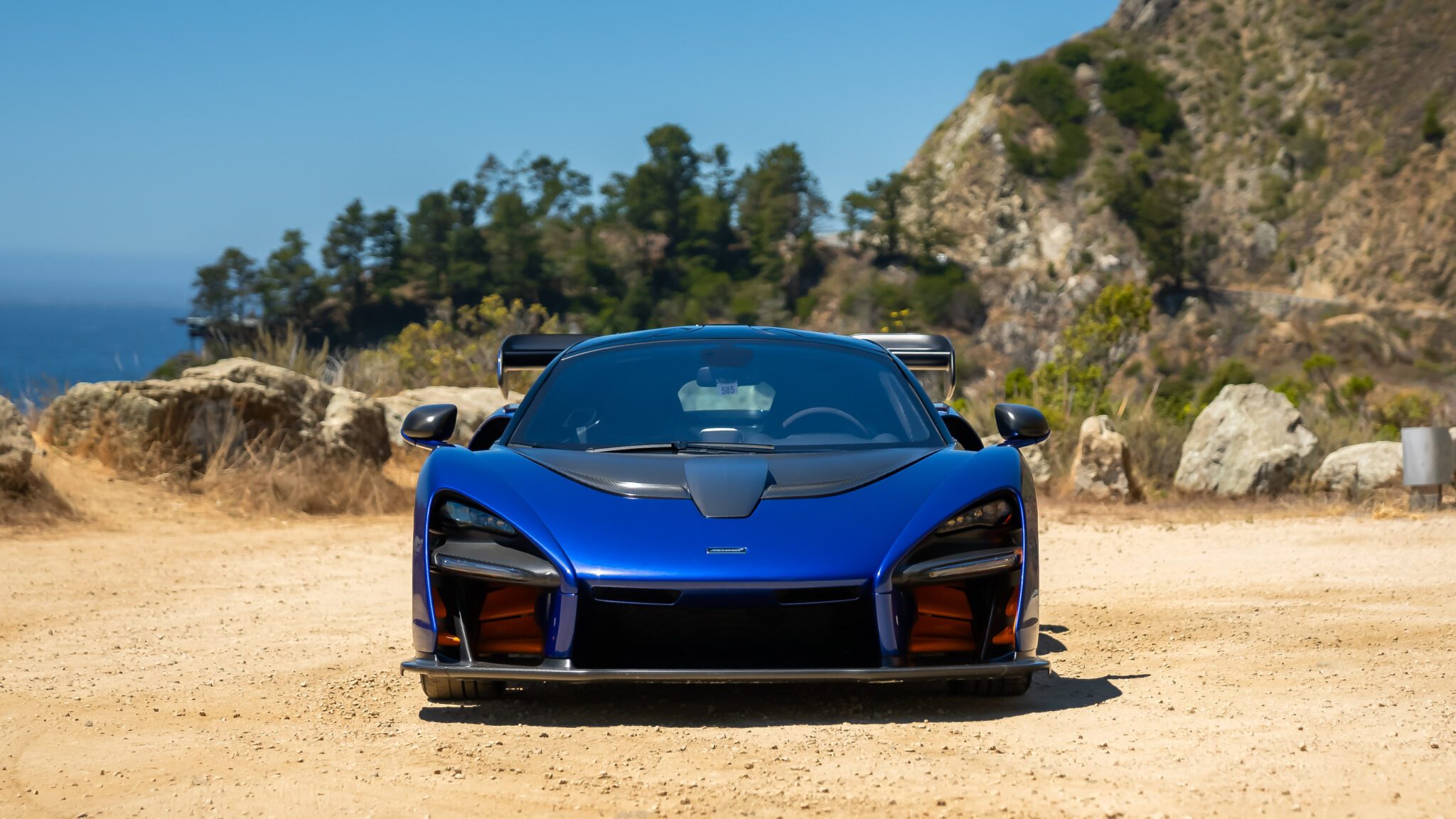
Despite the outpouring of attention, the Senna doesn’t stop traffic because it looks good. It is the clearest example of a car that prioritizes function over form, with its purposeful design generating a feeling of shock and awe. It’s a car you gaze upon with disbelief that it even exists. Yet, that McLaren successfully federalized it for sale in the US remains a tremendous feat. While cars like the Aston Martin Valkyrie and the Mercedes-AMG One arguably outdo it in terms of motorsport theatrics, they’ll have to cross the Atlantic under the “Show or Display” exemption. Years after the Senna’s 2017 debut, no fully US-legal road car is as dedicated to extremes.
Turning onto the Pacific Coast Highway, adorned by endlessly winding pavement, towering cliffs, and stunning ocean views, is usually a terrible idea during Car Week. A strong police presence, confused tourists piloting overpriced rentals, and easily annoyed locals make finding a road clear enough to exercise a car like the McLaren Senna a true challenge. Luckily, or technically unluckily, intense storms damaged sections of Highway 1, triggering its closure about 40 miles south of Carmel. With high hopes that a road to nowhere would provide enough open space, I pointed the Senna’s nose towards the coast.
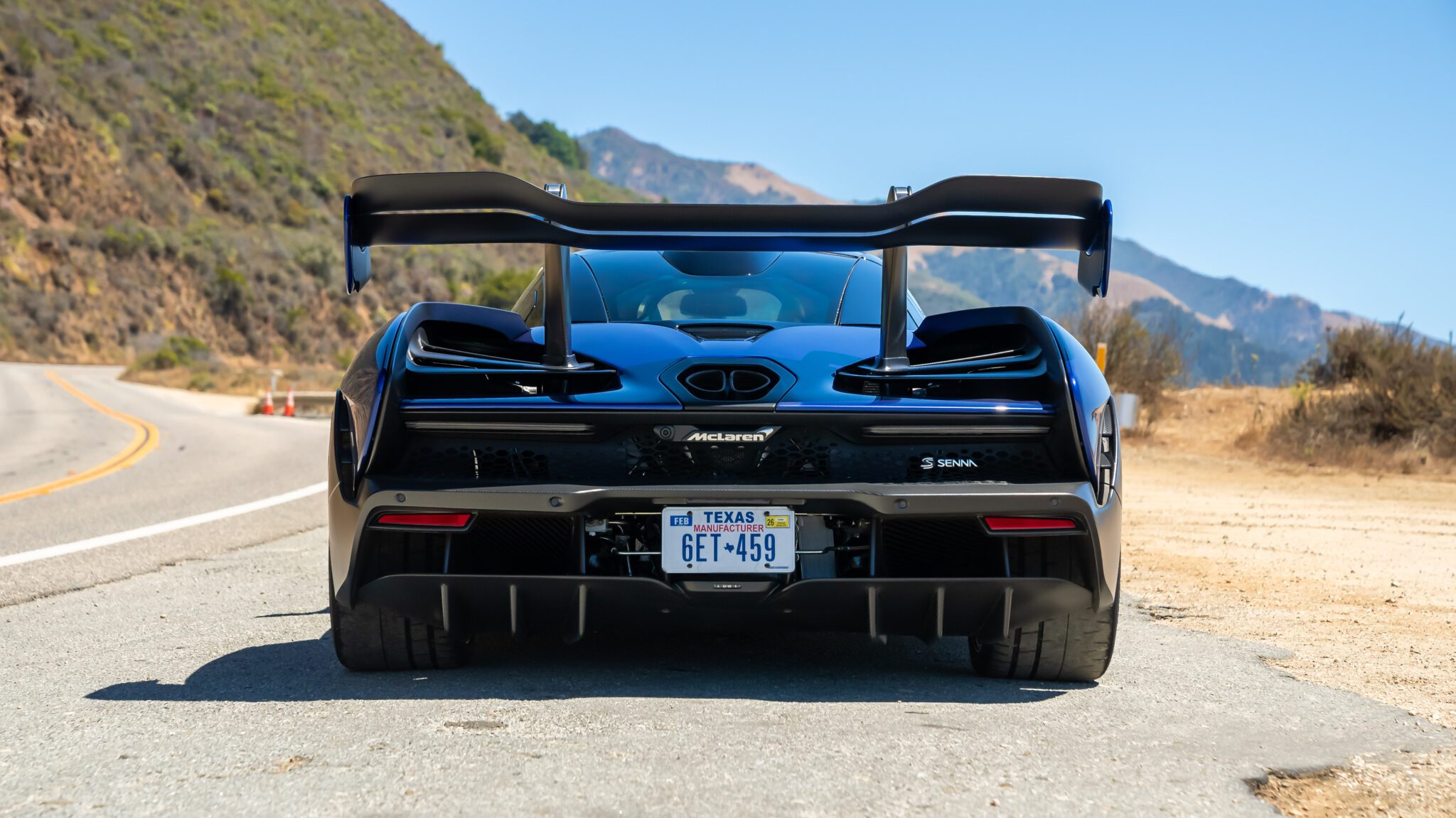
Immediately, I hit traffic, with my average speed dropping to what felt like a crawl. Unexpectedly, however, the McLaren Senna was unaffected by the slowed pace. Riding on a modified version of the carbon monocoque that underpins the 720S, the Senna also incorporates updated versions of its seven-speed dual-clutch automatic and its twin-turbocharged 4.0-liter V8, just boosted to 789 horsepower and 590 pound-feet of torque. As such, it doesn’t struggle in slow-moving traffic, shifting seamlessly in automatic mode with its dampers remaining relatively compliant in their softest setting.
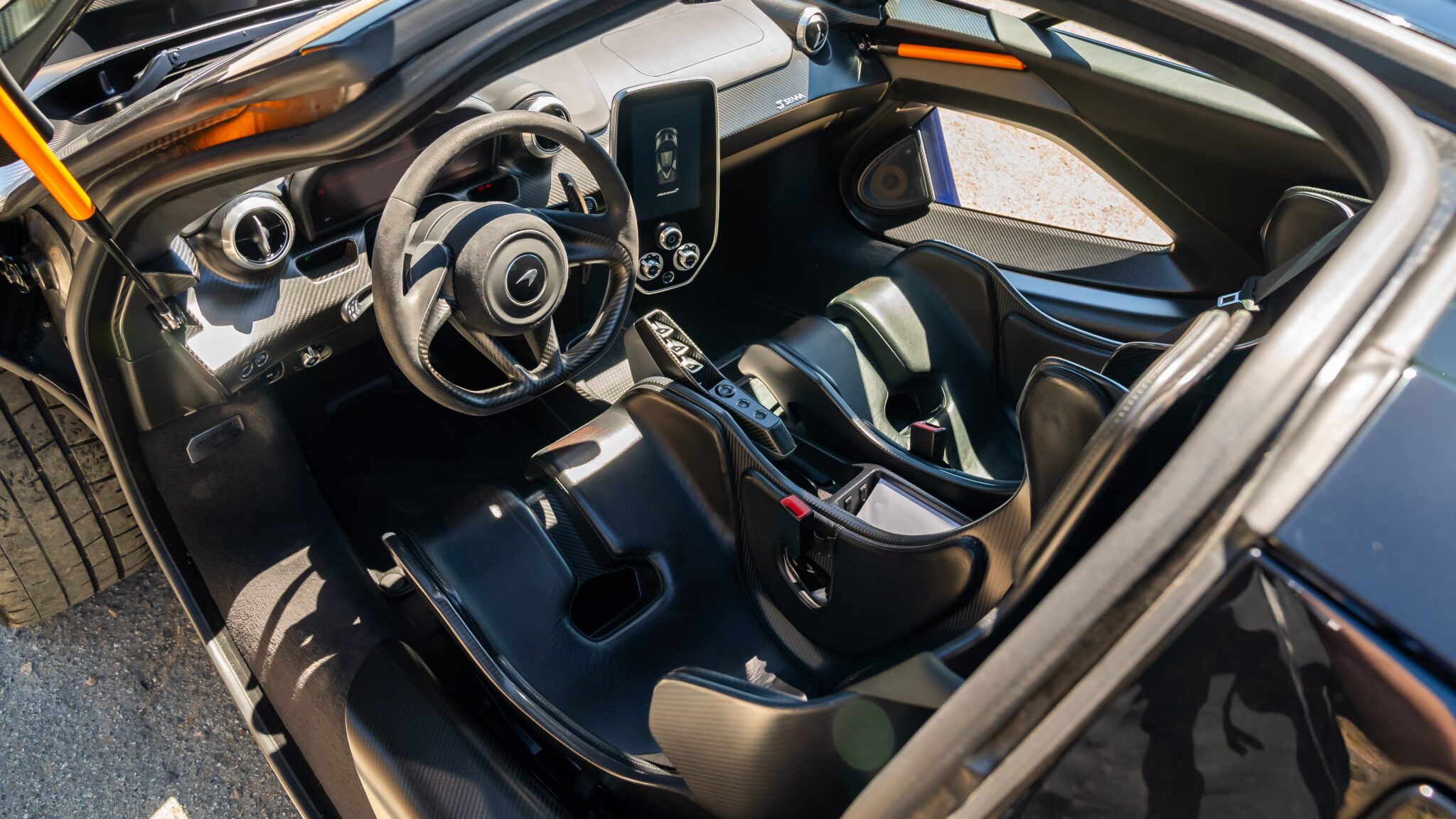
In the Senna, it’s easy to settle into what seems like an entirely normal driving experience until it’s suddenly not. Try to lower a window, and you’ll encounter an opening large enough to fit a postcard. Oh, and the switch that operates it is now on the roof, as is the start button and the door release.
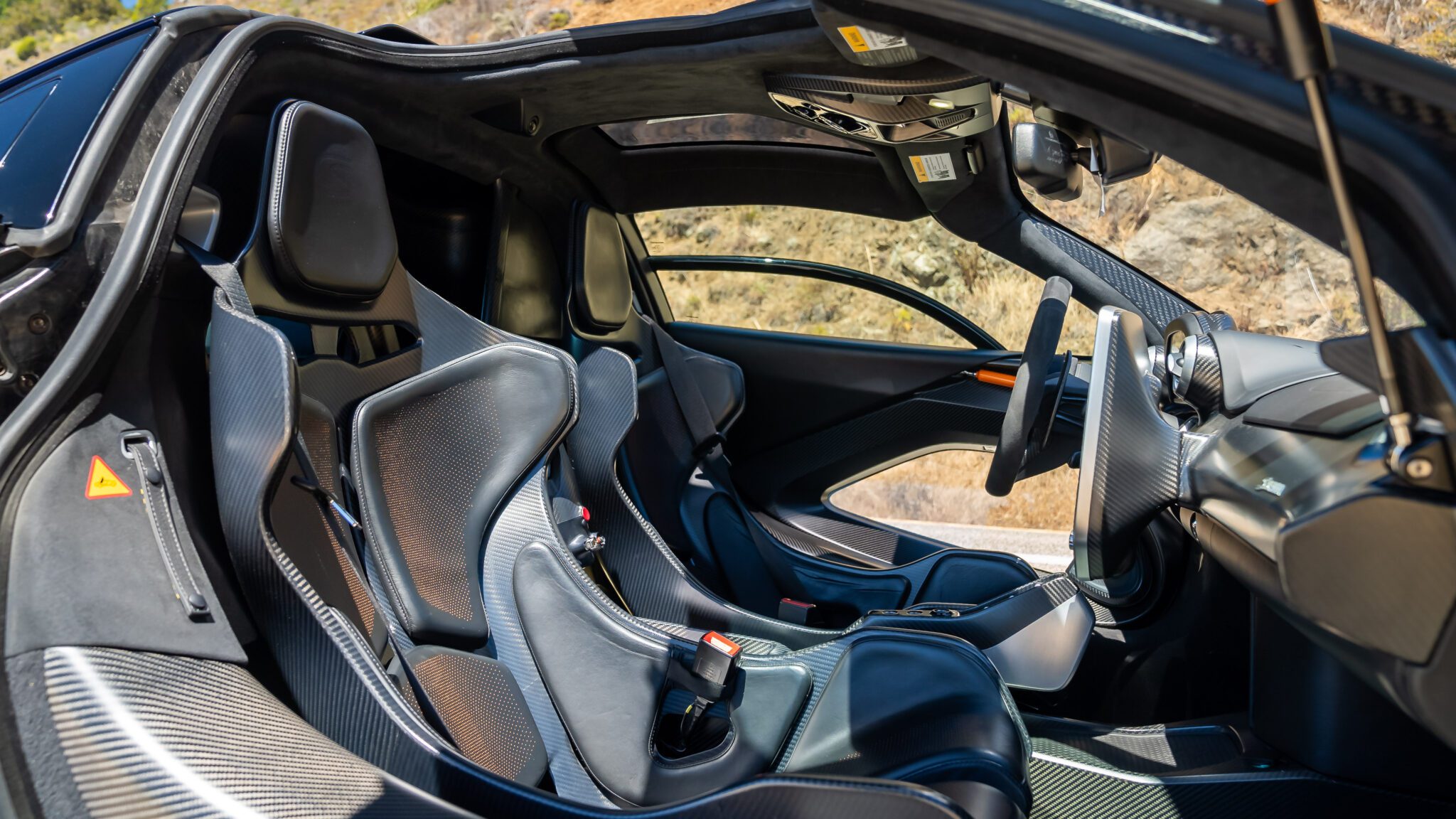
Glance out the side view mirror, and you’ll see its enormous rear wing making adjustments on the fly. Looking out the rear window feels akin to peering through a peephole, although you get yet another clear view of the massive spoiler. Even admiring the Pacific becomes an unusual experience as you can catch glimpses through the traditional side-view windows up top and the extra piece of glass in its door below.
There are constant reminders that you’re piloting something special. Be it the cabin, the stares of passers-by, or that split second when you catch a glimpse of its extreme design reflected off another car. Click down through a few gears, however, and the experience takes yet another turn. Passing what felt like, and what Waze indicated, was the last CHP officer on the route, I switched its powertrain and suspension settings into Sport.
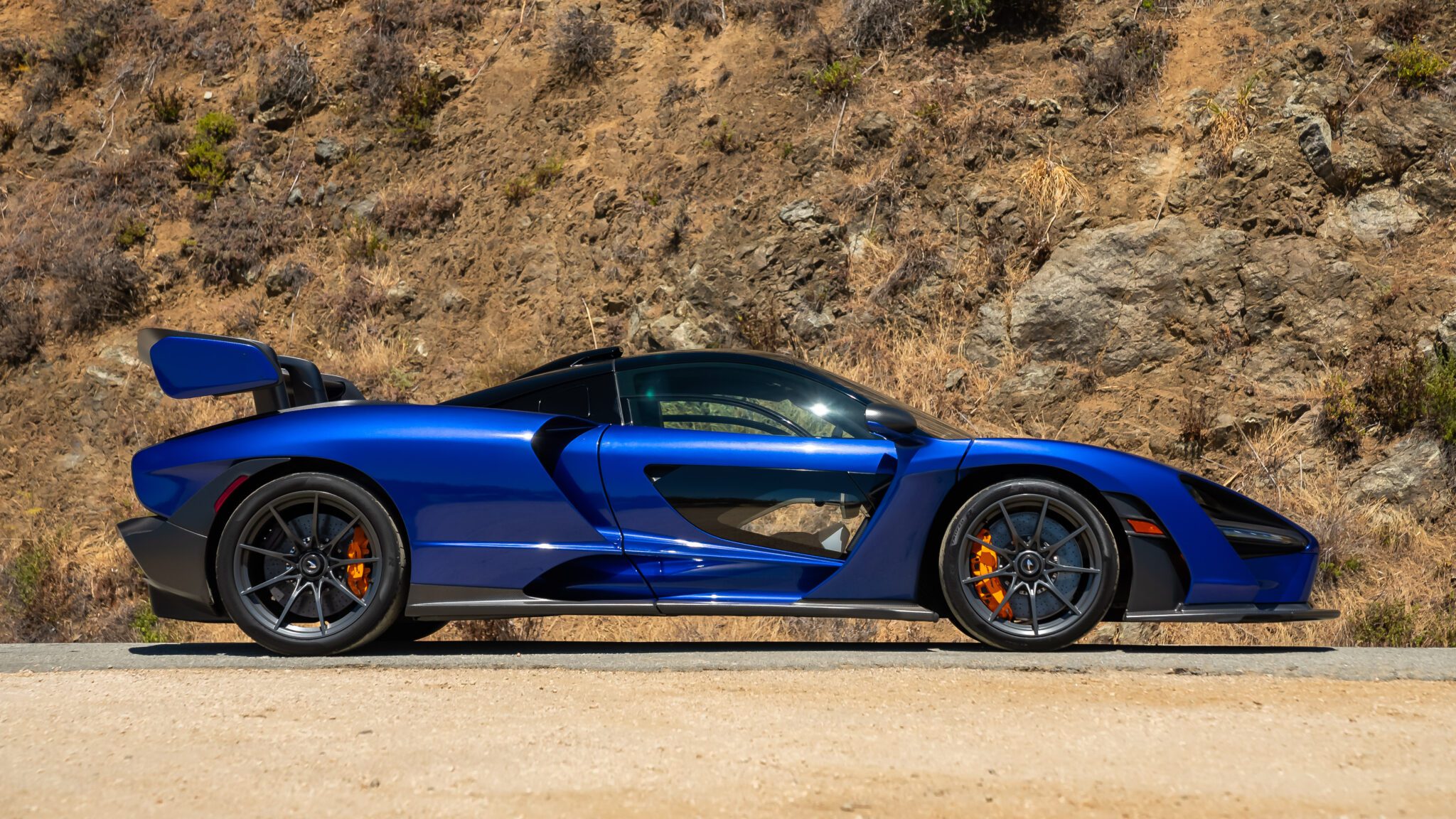
This McLaren Senna, which had up until this point, played the role of grand tourer, suddenly awoke in anger. The graphics of its digital instrument cluster morphed to display a large tachometer and a prominent gear indicator while its dampers stiffened considerably. I could instantly feel more road vibrations permeating through the cabin and, crucially, my fixed-back seat.
No longer confined to lower revs, the Senna’s exhaust note doubled in volume almost instantly, with a high-pitched buzz absent in all other McLarens. Of all the advice Bruno Senna gave me ahead of this afternoon, wearing earplugs was one I mistakenly ignored. He mentioned that the production cars were far quieter. Still, I hadn’t anticipated how loud this pre-production unit would be. Thankfully, the song emanating from its large twin pipes wasn’t just louder; it retained an exciting, raspy tone, which made punishing my eardrums worthwhile.
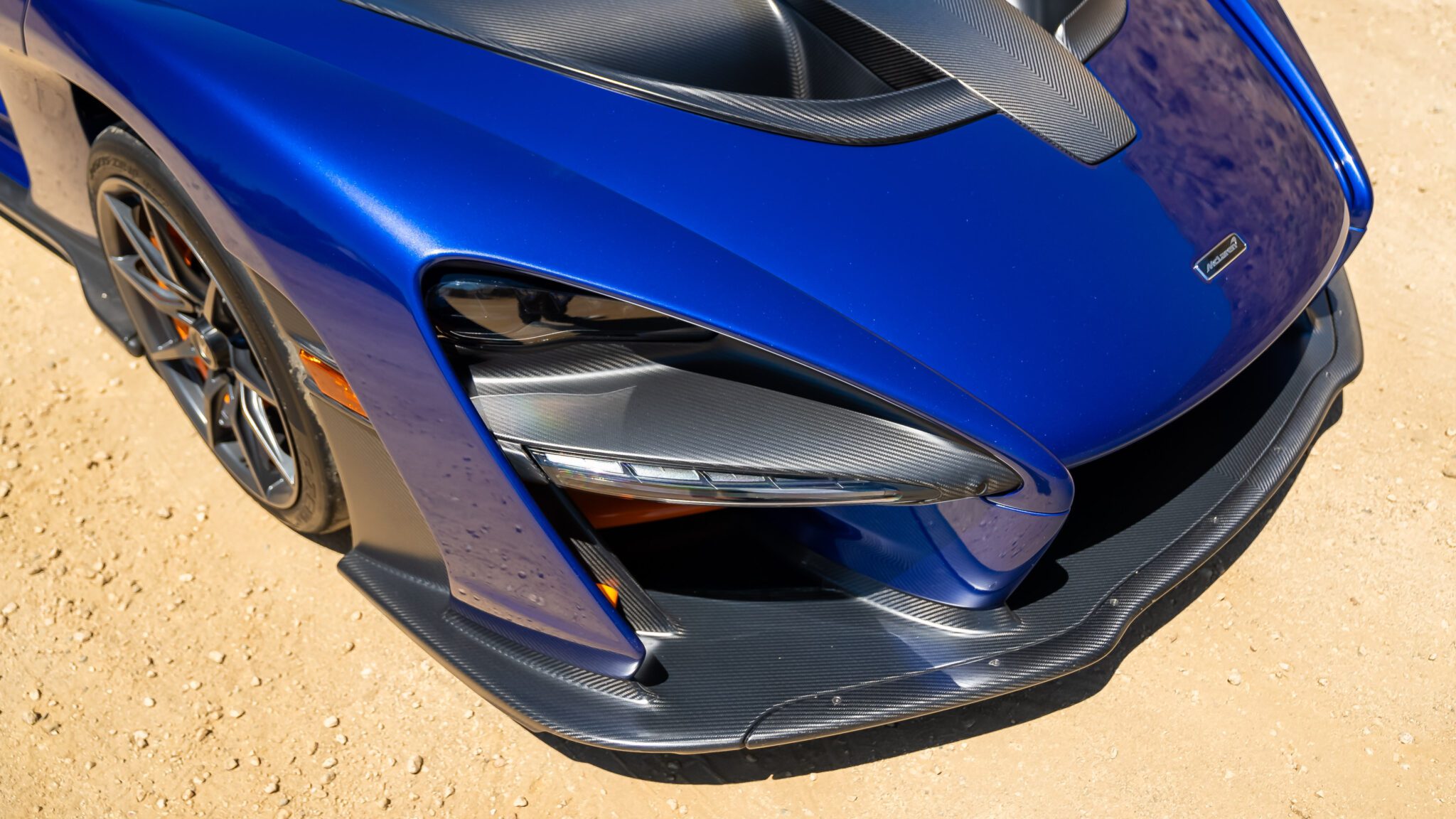
On paper, I can understand how the McLaren Senna might come across as a re-bodied 720S given all the parts sharing, but diving into the first bend at speed revealed it’s anything but. There’s an immediacy to the response you get from its front end that I’ve never felt before. It changes direction instantly without hesitation, its steering feeling almost telepathically quick. Its electro-hydraulic setup transmits every last road feature with near-constant feedback, even while resting on center.
Chaining some switchbacks reveals a feeling of masslessness you can’t fake with wider tires and firm suspension, a gift of this car’s 2,641-pound curb weight. It pays further dividends when you lean into the throttle between corners and it just picks up speed instantly as long as you avoid the turbo lag present at lower revs. Cresting a small hill provided a clear view of the road ahead. My impromptu road trip south had finally paid off, and I couldn’t see another car ahead for what must have been a mile. Assuming such an opening wouldn’t repeat itself, I dialed to track mode and went for it.
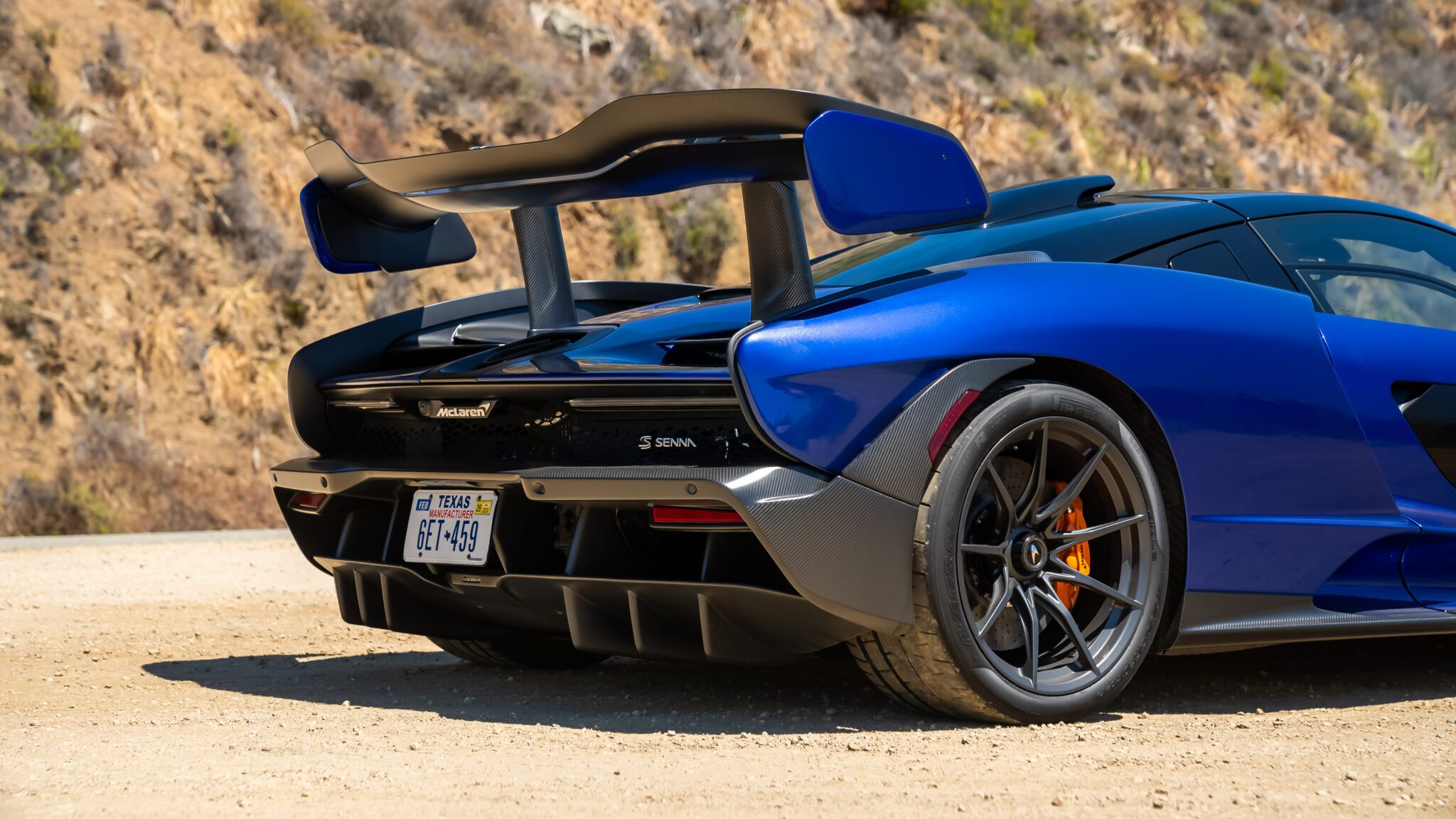
As in the 720S, the Senna’s digital cluster swiveled, revealing a small slit-like display showing the selected gear, engine revs, and current speed. The grip levels were unlike anything else I’ve experienced before. It’s undramatic in how confidently it sticks to the road with no added noise from its tires, just lateral forces embedding your torso into the leather seat pads. With each passing bend, its powerful carbon ceramics, quick front end, and grippy rubbers invited me to brake and turn later. Yet, as I did, the Senna never lost its composure, just picking up quicker corner speeds.
I’d love to tell you that the jump from Sport to Track was transformational, but even on one of the greatest roads in the country, accessing that highest level of speed simply isn’t possible outsie of a proper circuit. As enjoyable and confidence-inspiring as the McLaren Senna is to hustle up an empty mountain road, there’s an unshakable sense that you’ll reach your limits far before it does. Knowing when to back off, I found a turnout just ahead of the closure and pointed the Senna’s nose back to Monterey.
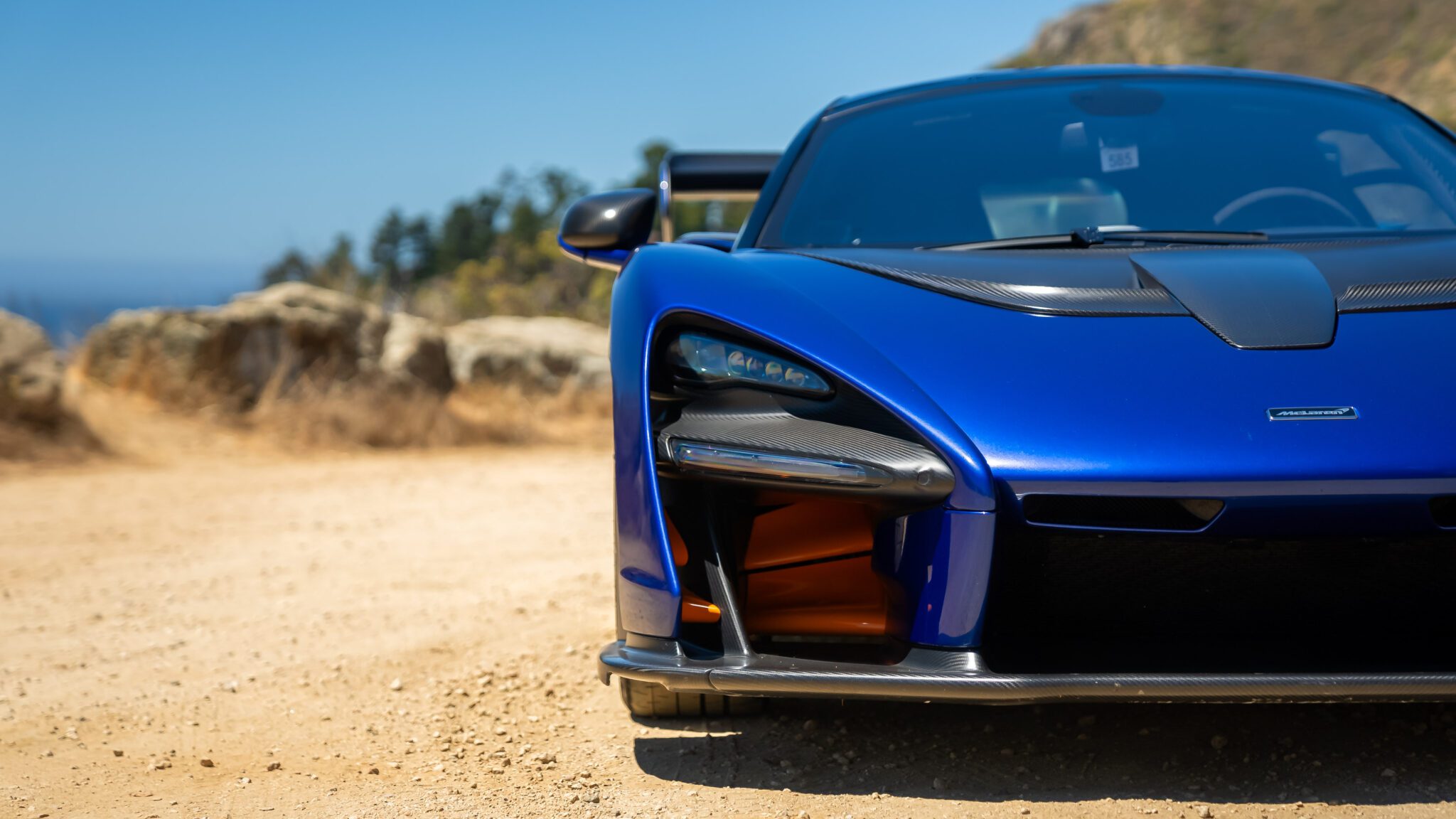
As part of McLaren’s Ultimate Series, this car carried a $958,966 base price when new, making it a seven-figure proposition once options were factored in. And despite not producing a million horsepower, this plants it firmly within the illusive hypercar category. A space dedicated to the cars that aren’t just quickest, although the Senna’s 2.8-second run to 60 mph and 211 mph top speed are nothing to scoff at, but those that deliver an experience most supercars can’t.
In this context, the McLaren Senna represents not just the best the carmaker could do in 2017 but a pivotal moment for its segment. This year’s Monterey Car Week saw multiple automakers that commonly reside in the seven-figure space, including new entrants, focus on more than just outright speed. With the arrival of electric super and hypercars in the interim making on-paper stats practically superfluous, there’s a renewed focus on the driving experience. The people who can have anything have spoken, and they want memorable drives.
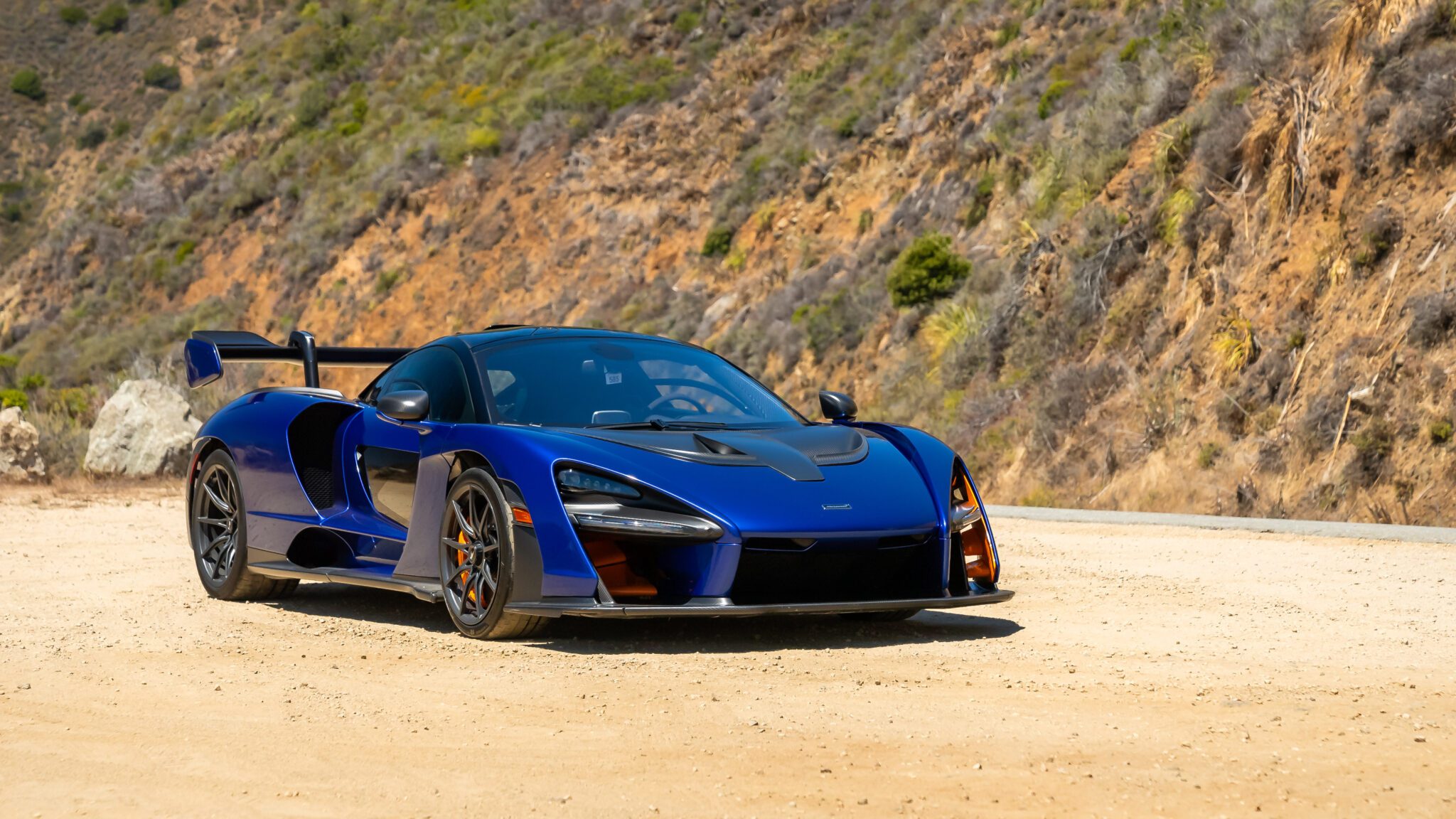
Viewed through this lens, the Senna was, in retrospect, ahead of its time. Even when new, it didn’t have the most horsepower or the quickest in a straight line. Instead, it takes the concept of the racecar for the road and focuses it to offer a memorable experience. From the moment its massive door opens, or its enormous wing adjusts into position, the Senna fills any space it inhabits with theater. What makes it unique, however, is that you don’t have to necessarily drive it to experience what makes it so special.
The spotters I first encountered, the kids that diligently stalked the Portola’s parking lot, had it right all along. Despite sitting in rarified air, the Senna stands as undeniably unique. It’s the kind of car you’re forced to admire, even if you’re not doing so for its looks. Years on, nothing on the road looks like it, and as it turns out, its strength remains that few cars can match the thrills it provides.

